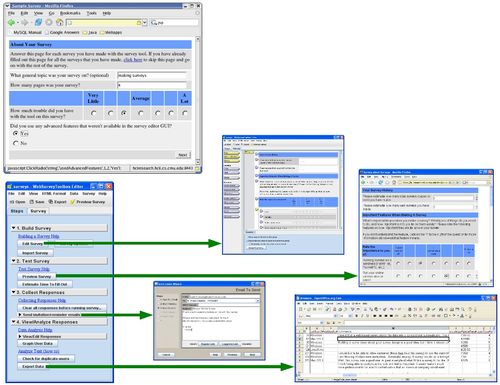Understanding the Web: A Comprehensive Survey

Have you ever wondered how the vast expanse of the internet works? The web, a term we use daily, is a complex network of interconnected systems and technologies. This article aims to provide you with a detailed and multi-dimensional survey of the web, covering its history, structure, technologies, and applications.
History of the Web

The web’s origins can be traced back to the 1960s when the concept of a networked computer system was first proposed. However, it was in 1989 that the World Wide Web (WWW) was born, thanks to Tim Berners-Lee, a British computer scientist. The web has since evolved from a simple text-based system to a multimedia-rich platform that connects billions of people worldwide.
Structure of the Web

The web is built on a client-server architecture. When you access a website, your web browser acts as the client, while the server hosts the website’s content. The communication between the client and server is facilitated by the Hypertext Transfer Protocol (HTTP), which defines how data is exchanged over the web.
Here’s a breakdown of the key components of the web’s structure:
| Component | Description |
|---|---|
| Web Browser | Software that allows users to access and navigate websites. |
| Web Server | Hardware and software that hosts websites and delivers content to users. |
| HTTP | Protocol that defines how data is exchanged between clients and servers. |
| HTML | Markup language used to create the structure and content of web pages. |
| CSS | Style sheet language used to describe the appearance of web pages. |
Technologies of the Web
The web is powered by a variety of technologies, each playing a crucial role in its functioning. Here are some of the key technologies:
- HTML (Hypertext Markup Language): HTML is the backbone of web development, providing the structure and content of web pages.
- CSS (Cascading Style Sheets): CSS is used to style web pages, making them visually appealing and consistent across different browsers.
- JavaScript: JavaScript is a programming language that enables interactive web pages, allowing users to perform actions such as submitting forms, playing videos, and more.
- Web APIs: Web APIs allow web applications to access and interact with external data and services, such as social media platforms, payment gateways, and more.
Applications of the Web
The web has revolutionized the way we live, work, and communicate. Here are some of the key applications of the web:
- Information Sharing: The web has made it easier than ever to share information, whether it’s through social media, blogs, or news websites.
- E-commerce: Online shopping has become a popular way to purchase goods and services, with many businesses relying on the web to reach a global audience.
- Education: The web has transformed the education sector, providing access to online courses, tutorials, and resources for students and educators alike.
- Entertainment: The web offers a wide range of entertainment options, from streaming movies and music to playing online games.
Conclusion
The web is a powerful and versatile platform that has transformed the world we live in. By understanding its history, structure, technologies, and applications, you can gain a deeper appreciation for the role the web plays in our lives.



